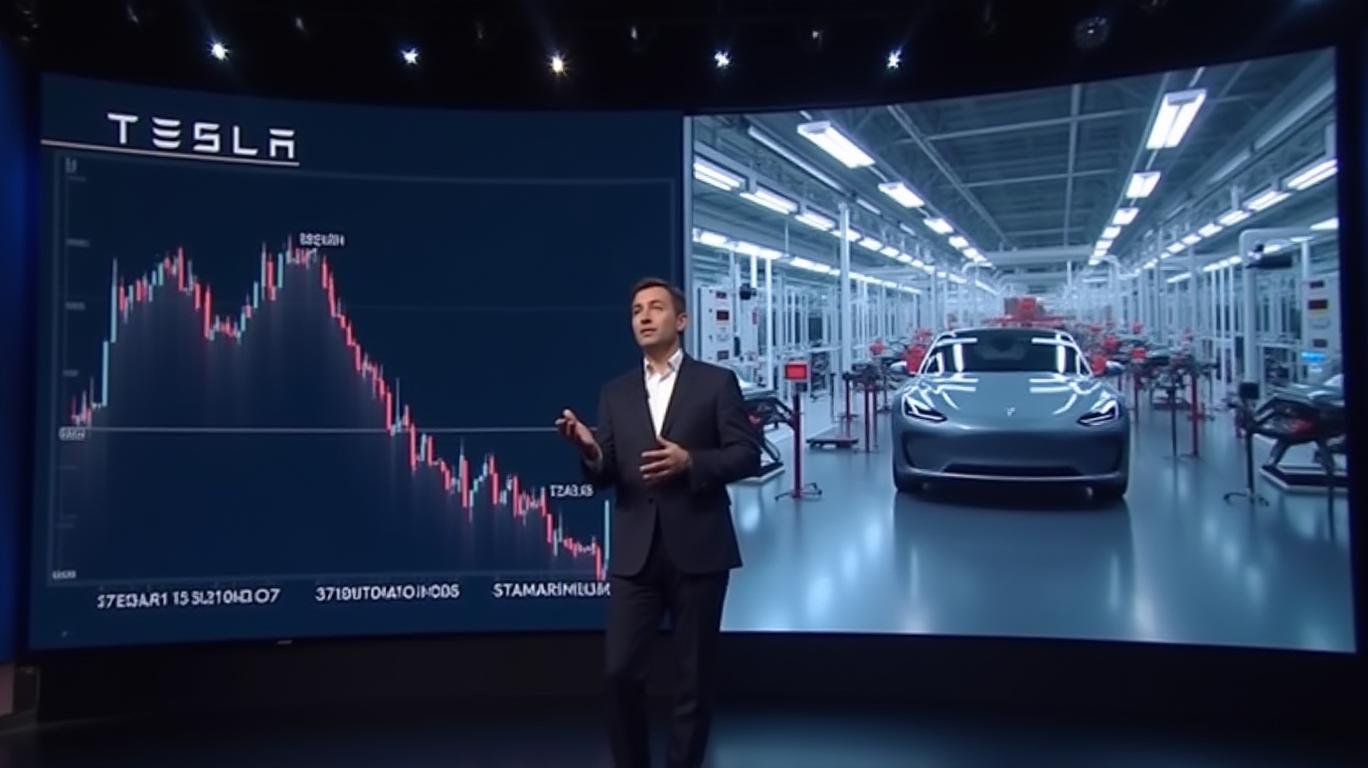Tesla's Form 144 Filing: Navigating Near-Term Volatility Amid Long-Term Tailwinds
The recent Form 144 filing by Tesla's CFO, Vaibhav Taneja, proposing the sale of 91,600 shares (valued at ~$4.9 million) has reignited discussions about near-term volatility in Tesla's stock (TSLA). However, this regulatory disclosure must be viewed through the lens of "Trump 2.0" market dynamics, which promise efficiency reforms and autonomous vehicle regulatory tailwinds. While the filing may amplify short-term price swings, Tesla's operational milestones—from Berlin Gigafactory output to Powerwall demand—paint a compelling picture of long-term strategic upside. Here's how investors should position themselves.
The Form 144 Filing: A Catalyst for Short-Term Volatility?

The Form 144 filing by Taneja, along with a larger 477,572-share sale by Director Ira Ehrenpreis (valued at ~$162 million), signals insider liquidity needs. However, these sales are governed by Rule 10b5-1 plans, prearranged trading schedules that mitigate insider trading concerns. The total shares sold—just 0.003% of Tesla's 3.2 billion outstanding shares—are unlikely to cause structural damage. Still, the filings could amplify volatility in a market already sensitive to macroeconomic shifts and geopolitical risks.
Technical Indicators to Watch:
Tesla's stock has oscillated between $220 and $300 since early 2025, with sharp declines often followed by rebounds fueled by operational updates. The May 16 Form 144 filing's announcement may test support levels near $250. If the stock holds above this zone, buyers could reassert dominance, leveraging bullish momentum from recent milestones.
"Trump 2.0" Tailwinds: A Regime Change for Tesla's Growth?
The "Trump 2.0" narrative hinges on government efficiency reforms that could accelerate Tesla's growth. Key catalysts include:
1. Autonomous Vehicle Approval: Regulatory clarity on Level 4 autonomy could unlock $40 billion in annual revenue by 2030, per Morgan Stanley.
2. Infrastructure Support: A Biden-Trump bipartisan push for EV tax incentives and charging infrastructure could boost Tesla's sales in underserved markets.
3. Global Manufacturing Synergy: The Berlin Gigafactory's ramp-up (target: 500,000 vehicles/year) and Powerwall output expansion align with "Make Everything in America 2.0" themes, reducing production bottlenecks.
Near-Term Risks vs. Long-Term Opportunities: A Contrarian Play?
Short-Term Concerns:
- The Form 144 filings may trigger profit-taking by momentum traders.
- A potential "Trump 2.0" misstep—such as delayed autonomous vehicle regulations—could stall sentiment.
Long-Term Drivers:
- Berlin Gigafactory: Tesla's most advanced factory reduces battery costs by 12%, per internal reports.
- Powerwall Dominance: With 500,000 units sold in Q1 2025, Tesla is cornering the residential energy storage market.
- China's EV Shift: Tesla's Shanghai Gigafactory 2 expansion (target: 1 million cars/year) positions it to capitalize on China's EV mandate reforms.
Positioning Strategy: Buy the Dip, but Stay Disciplined
Tesla's stock has historically rewarded investors who buy during regulatory/operational uncertainty. Here's the playbook:
1. Entry Points: Accumulate positions if TSLA dips below $240, targeting support near $230.
2. Stop Loss: Set a hard stop at $220 to limit downside risk from Form 144-driven volatility.
3. Exit on Strength: Trim positions if the stock breaches $300, locking in gains ahead of potential profit-taking.
Conclusion: Tesla's Volatility is a Buying Opportunity in Disguise
While the Form 144 filings and macroeconomic noise may keep TSLA volatile in the near term, the "Trump 2.0" regulatory tailwinds and Tesla's operational execution create a high-reward asymmetry. The shares are priced for perfection, but a disciplined approach—buying dips with stops and exits—could yield 30-50% returns as Tesla solidifies its dominance in EVs, energy storage, and autonomy. The next six months will test this thesis, but for patient investors, Tesla remains a must-own name in the global green tech revolution.
Act now, but think long.
—Ben Levisohn

Comments
No comments yet